As diners, we admittedly take a lot for granted. Yes, in this modern food world, many quality pubs offer very diverse menus. For instance, in Philadelphia, it’s not uncommon to see crispy veal sweetbreads, fried oysters, cheesesteak spring rolls, grilled octopus and lamb burgers being served at many local bars. While a diner can naively enjoy such dishes, food and drink can arguably be enjoyed and appreciated much more when he or she knows from where it comes. Meet Paul Kimport, chef/co-owner of Johnny Brenda’s and co-owner of Standard Tap, both in Philadelphia. In December of 1999, it was rare to find any tavern that featured anything more than chicken fingers and maybe one or two local brews. That all changed when co-owners Paul Kimport and William Reed opened Standard Tap’s doors in North Philly, an area in which businesses were not opening and a neighborhood to where customers were not flocking back then. Johnny Brenda’s – a bar, restaurant and amazing music venue – followed suit, half a mile north, about a handful of years later. Both restaurants feature award-winning, local beers from Pennsylvania, New Jersey and Delaware and pure, wholesome food, mostly from area farms and local vendors. All suds and dishes are listed daily on chalkboards throughout each restaurant, and you won’t find any bottles at either bar, just fresh taps. Rarely are televisions on – neither venue even had them for a long while, until well after 2008. By that time, it seemed as if every bar owner throughout Philly had tried to copy, mimic and duplicate Kimport and Reed’s vision: good local beer and food in a no-frills, theme-less environment. In an ever-growing (and monetizing) food world, where many restaurants and pubs seem more focused on their public relations firm and how many Twitter followers they have than on actually producing quality food, there is a peaceful, respectful aura at Standard Tap and Johnny Brenda’s, where, as Kimport explains, their focus is simple: neighborhood, local spirits and wholesome food. According to Kimport, his restaurants are similar to the Pennsylvania farms he grew up on, as there’s no need to “show off” or be wasteful with any aspects of their food, menu or even how they run their businesses. We recently caught up with chef/co-owner Paul Kimport at Johnny Brenda’s. We sipped some Philly brews, slurped some local raw oysters, crunched on a humongous soft shell crab sandwich and shared some (chocolate covered) memories …

From where does your background in cooking stem?
My cooking background really just came from being an enthusiast and making a connection to the idea of independent entrepreneurship and the importance of natural local foods.
I grew up appreciating small farms, raised in Central Pennsylvania with farm running grandparents. My hometown was an old logging, rust belt-Pennsylvania town. My grandparents were all farmers. One set was successful with poultry. The other was more a romantic idea, a gentleman’s farm. We didn’t really have the gentry kind of money to be that big of a farm. It was a very organic and casual environment. My grandparents were too old – a generation beyond – to be hippies. But they were very into the idea of natural food. I always got some inspiration from that, the idea of something independent being better.
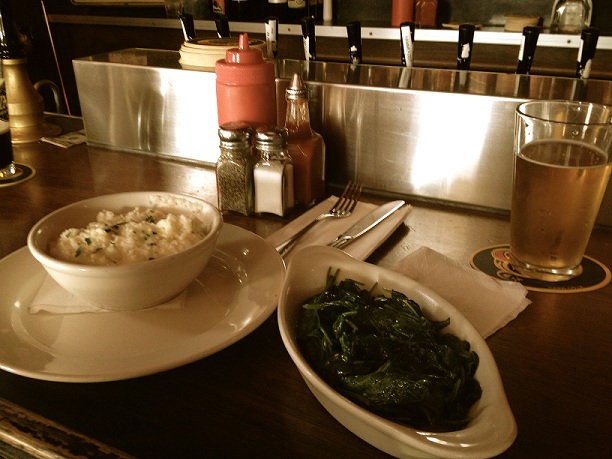
How did you end up in this niche of the food world?
So I was a dishwasher at a restaurant when I was 15 years old. And then I didn’t work in restaurants again until I was 20. I came to Philadelphia to go to school, when I really started working in restaurants. I worked in some kitchens, mostly in catering, but I usually was in the front of the house. I started as a busboy, then a waiter, then a bartender.
It was the early 1990s, and I was bartending at a restaurant in West Philly called Zocalo, a Mexican-fusion restaurant, which is still here today. I met [co-owner] William Reed there. He was a waiter. We became friends, started brewing beer together, and that’s where we started hashing together the idea for Standard Tap. We started thinking of the idea of connecting with food. That was really important to us, making a place with authenticity. A place that was real honest, stated its purpose and held to it. We were big fans of a place in Manhattan called DBA and what they were doing with the real ale idea. We were inspired by their chalkboard menu and their focus on whiskey and everything. We wanted to go a little further: no Miller Lites, Heinekens or any beers like that or bottles at all. We wanted our focus to be absolutely regional. We saw breweries like Stoudt’s [Adamstown, PA] and Victory [Downingtown, PA] doing really masterful work with German styles and lagers. We thought the region was very full with world styles, more than any other place I could think of. We thought we could do that kind of thing and focus on making our food compliment those world styles of beer, in a way.
At the time when we opened Standard Tap, our ideas were so extreme. We were opening in North Philly [now “Northern Liberties”] where no one wanted to be at the time. My menu ideas were very challenging and different [from what others were cooking] back then. It was an unusual kitchen at the time, and I didn’t expect someone to come in and cook for me. So I decided to cook and be the chef myself.

What would you do as a child on a farm?
I worked at my grandparents’ farms growing up. I worked at some other people’s farms growing up, too. That was what I chose to do instead of playing sports, for a large part. You do small simple things as a kid on a farm. You can be 13 years old and operate a tractor. You can touch the pedals. You can cut hay or whatever. You try to help out as much as you can with bailing hay. There were mixed tasks. Everything changes throughout the season. It’s not a factory farm where it’s the same thing every day. Some days you’re welding equipment. So I would watch my dad and neighbor work on repairing machinery. So it’s all kind of a do-it-yourself approach.
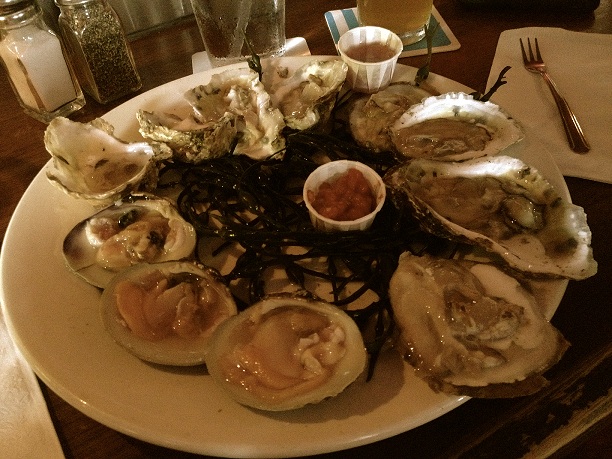
Does your farming background help you in the restaurant world?
I loved working on farms. There was a sense of urgency. The only thing I can compare it to — that kind of hustle — is working in a restaurant in a city. I think that’s really exciting. On a farm, you’re always wondering if it’s going to rain or not. You’re always thinking about how much time you have to accomplish a job. Small businesses of any kind have that kind of stress and anxiety of being successful, how to be smart, how to pick something. At the restaurant now, I certainly appreciate my time working on farms in the past: you fix something because you have to. I’ll prepare restaurant equipment in a way that may be challenging for another restaurant owner because they don’t have that mechanical capacity. You just fix what needs to be fixed, you know. You get down there and do it. I think they are kind of similar in a way: small farms and restaurants.

How are Johnny Brenda’s and Standard Tap similar to farms?
I think local farms and local restaurants are kind of similar to indie music. To me, independence is kind of key to being local. Standard Tap is very much about the local thing and trying to center our selves in a way that people feel a sense of value about their culture. Our customers try to relate to our beer central-ness and our food, trying to make local food and antique local food seem exotic. For instance, we make and serve smelts, and our general customer had never even heard of smelts. Smelts and oysters are such classic things. Having a small fish fried and having it with mayo. To me, that’s a real classic kind of thing. I try to create a menu that I think might be hard to place in time. I want a feeling. Standard Tap’s building has survived since the 1800s. That’s kind of the vibe. The idea is that simple food can sometimes be better. It’s not trying to show off. It’s trying to connect to that idea.
Running a kitchen, I want to buy the best food I can buy, at a reasonable price. I started doing a duck confit salad at Standard Tap, because I could buy really high quality duck that I knew was from a great natural farm. And I could make foie gras from it. But the duck legs were kind of a cast off. And I was like, I know how to make confit. So the Tap’s duck confit became a real signature part of the menu. And it was something I could sell pretty affordably. Now, people are doing gastropubs everywhere, and they all have confit and duck legs. The idea of trying to be resourceful is what I always try to do. At Johnny Brenda’s, I try to figure out what we can do that is relevant and use the highest quality food in the parameters of our kitchen and what we can expect to sell to our community.
I hunted as a kid. I like the idea of having more control over the butchering. I had a grandfather who was a butcher. I feel like that’s one thing that’s kind of a lost skill. I know some restaurant schools are trying to introduce it. Most people don’t know how to butcher at all. I think that’s a real shame. I worked at some butcher shops. I tried to apprentice and learn. I feel like it’s a really valuable skill, and I use some of the skills I learned. They’re simple skills, but I think they’ve helped me a lot. They help me accomplish what I want. I hate to buy over-packaged stuff. I have a rule, for both of my places, that we never buy parts of chickens. To me that’s kind of a wasteful thing. At most restaurants, that’s all they do. They buy parts: a big bag of chicken breasts. To me, you always buy a whole chicken and you deal with it. It’s a much more attractive way to look at cooking than it is to be opening cryovac bags, filled with chicken breasts. Cooking should not involve packaging and doing the same thing over and over again.
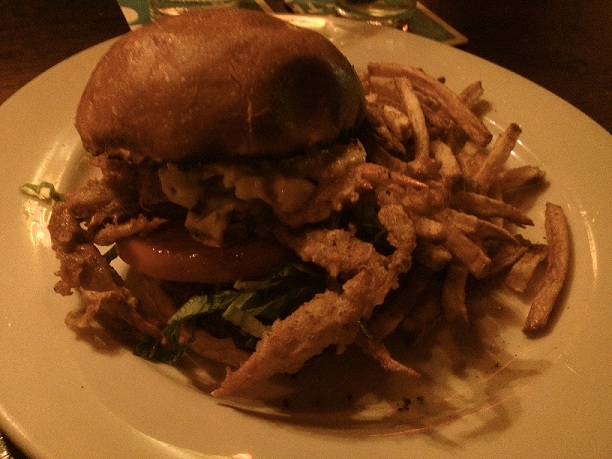
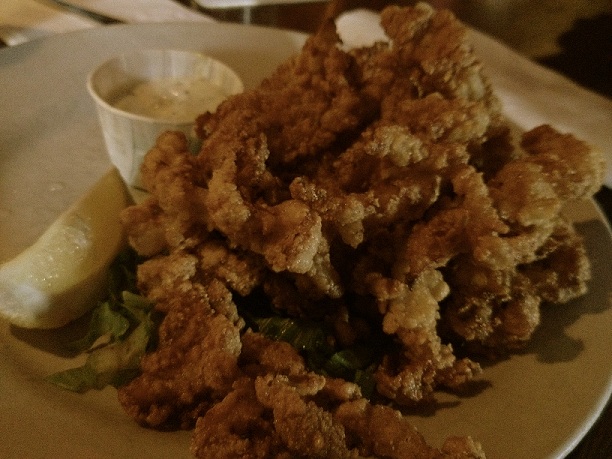
What foods remind you of childhood?
While I come from a great line of cooks and farmers, to me, the best thing was the harvest. Sure, there was some good baking going on growing up. But to me, the best food memories included: incredible sweet corn, incredible heirloom tomatoes and fresh baked bread. Things that were very immediate and very seasonal. Very ethereal. Foods from the harvest were marks on a calendar, in a way. And, only if you’re lucky, would you have a good a season and have the wherewithal to have a good garden. My dad is still a fantastic gardener. He’s got five varieties of sweet corn, six varieties of tomatoes. He’s kind of living in a way that I fantasize about. I don’t have a garden here in Philly. I grow grapes and some fruit trees, but I don’t really have a yard. I try to grow as much as I can with what I have. I love to grow stuff.
Of course, pies were standard. Apple pies in the fall. Pies are kind of a simple food. My grandmother would bake bread. She was definitely the one who taught me how to bake bread. Potato bread. Simple stuff. That simplicity is one of the lessons in baking. You have to take a little extra time and learn your technique. It’s all about the touch, when it comes to baking. You have to be used to doing it and taking the time.

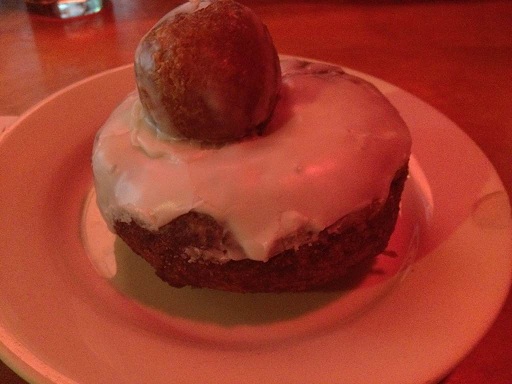
Were you a picky eater growing up as a child?
I’ve always been a really big eater. Maybe I inherited that from my family. My family always enjoyed eating. The only thing I remember not liking was lima beans, and that’s only because they were the frozen variety. Now I love them. I love everything. It’s a matter of quality.

What do you think about the modern food world?
In general, it’s incredible how much more educated people are about food today. I think it’s terrific. My whole approach and interest is to never be deceitful about our food, to never pre-package anything or get mixed up with anything artificial. I always want to be direct about what something is and where something comes from. So I love that people are more knowledgeable.
I think one modern change is that people look at food and restaurants as a whole art thing or lifestyle thing these days. People look at it from so many different ways. I think it’s great that people are starting to value the idea of craft. To me, craft is the beginning and end of it. There’s a crafty side to farming locally and sustaining locally. Craft is part of being able to find that stuff and bring it to your customers.
With the modern food blogs, it often seems like everyone is talking about hamburgers. I appreciate hamburgers. They’re a genius idea. There’s a certain tyranny when it comes to hamburgers though. As much as I want to butcher and I want people to eat organ meats and all, I think people eat entirely too much meat, especially too much ground meat. I’m very specific about our burgers, where they come from and what parts are being used. I want to be able to back as much as I can to the whole process. I feel like there is still a gap between what people want to talk about – style wise – and kind of what their tastes are. For example, processed flower. Here at Johnny Brenda’s, we have an option for Martin’s Famous Potato Roll. We use that roll for our vegetarian burger because the textures work. Some people really like that really soft, super-flour product. I like the Martin’s roll because it’s a Pennsylvania thing, but it’s also a very processed product. So it kind of breaks my heart when people want those processed rolls used for our hamburgers, which I’ve made sure is pure. But I understand the desire for it. That processed flavor is kind of satisfying on some level.
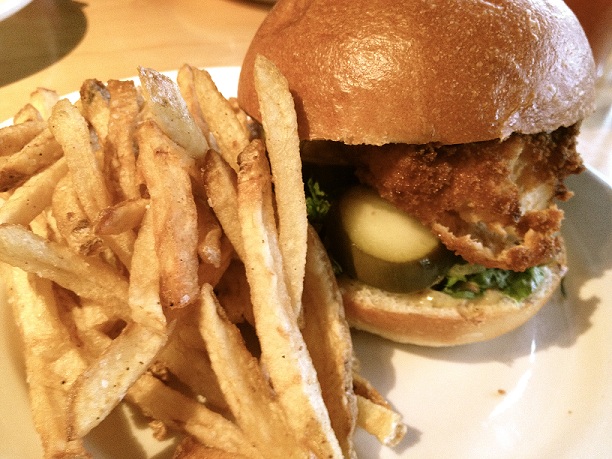
What about fast food then? Do you eat that yourself?
I avoid fast food because the food makes me feel kind of ill. But I think a lot about McDonald’s. They can make anything they want to. They have a lot of scientists. They have a lot of help in creating what they create. And they are very specific about what they create. So I’m fascinated about how they layer sandwiches. I think what they do is very intelligent. They understand how the mouth works. Where you get the salt and the sweetness. It’s not like it’s accidental what they’re doing. I feel like I want to go have a McDonald’s burger to try it again. But I’ve been saying that for years, and I still can’t quite go. <laughter>

What’s one of your most vivid farm memories?
When we needed chicken to cook with, my grandmother, a small scale chicken farmer, would judiciously select one of the less productive egg layers from a bunch of Rhode Island Reds in one of her hen houses in preparation for our dinner. Her task was done in a solemn and efficient way. Clasping the chosen bird by the feet, she would quickly and steadily march it out of the house to a large wooden block near a small tree. The goal would always be to create as little disturbance as possible. Then with the legs and wings both secured by her surely earth harvester’s grip, she would place the head to the block and then swing a well-honed axe to the neck in a swift dispatch of duty. My grandmother would reach up to hang the bird to bleed out from this little tree that was a perfect height for her short stature. After being bled, the chicken is then dunked in scalding water for a minute or two before being plucked, which is no mean feat, let me tell you. If attempting to claim a bird in the manner of some dirt-road, rural-addressed, farming granny, I would recommend planning all steps very carefully. Absolutely endeavor to practice your axe swinging technique first. Don’t be a klutz. Seriously though, all cooks benefit from developing a deeper respect for the animals they cook.
What family recipe do you wish to share with us?
My grandmother would make Pennsylvania Dutch Chicken Pot Pie for special company of four or more people, when given at least a day’s notice. The concept of chicken pot pie in Pennsylvania Dutch cooking is more a stew-ish, noodle dish. The “pot” is literally the one regular pot in which the noodles and the stew or broth are cooked together. This dish is served, directly from the large regular pot, by spooning it into individual bowls or large dishes. The distinction between “pot pie” and “noodles” is that “pot pie” is made from flour and water and is cut into large squares, while “noodles” come from an egg noodle recipe and are made thinner and cut long like pappardelle. My Granny’s cooking certainly inspired the generous utilitarianism in my cooking style. Enjoy my Granny’s Pennsylvania Dutch Chicken Pot Pie!

***
Paul Kimport is the chef and co-owner of Johnny Brenda’s and the co-owner of Standard Tap — recently named one of the Top 50 best restaurants in Philadelphia by Philadelphia Magazine in December of 2012, which is quite impressive for a tavern in a major city.
